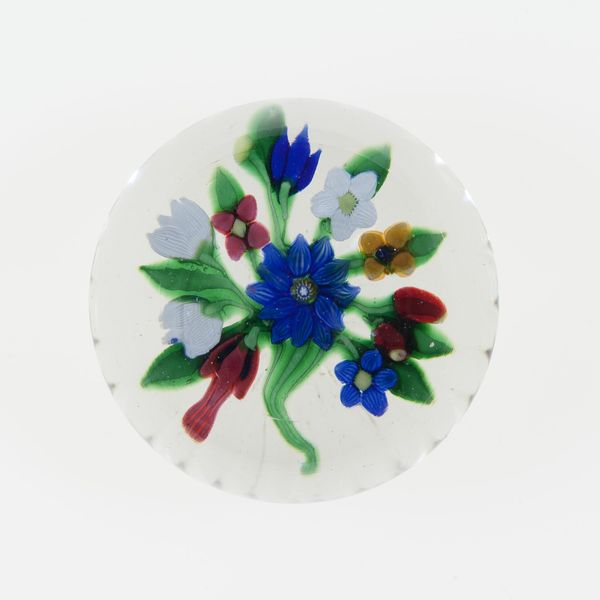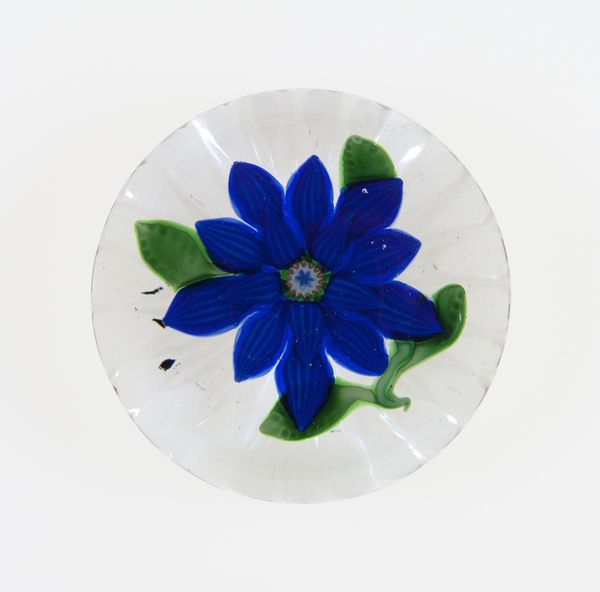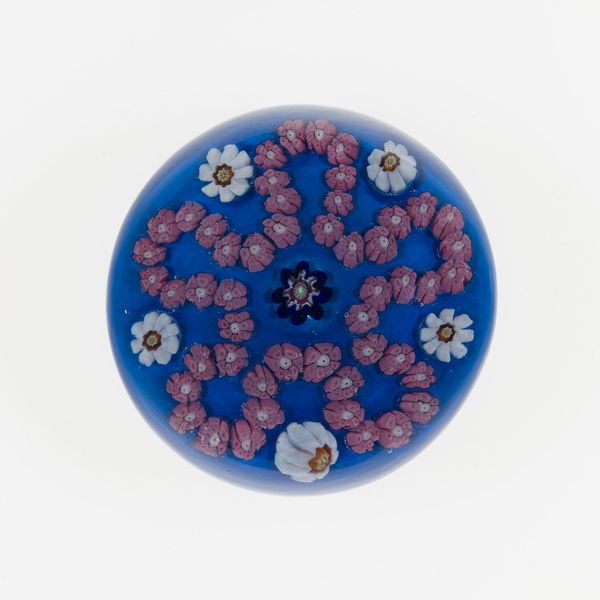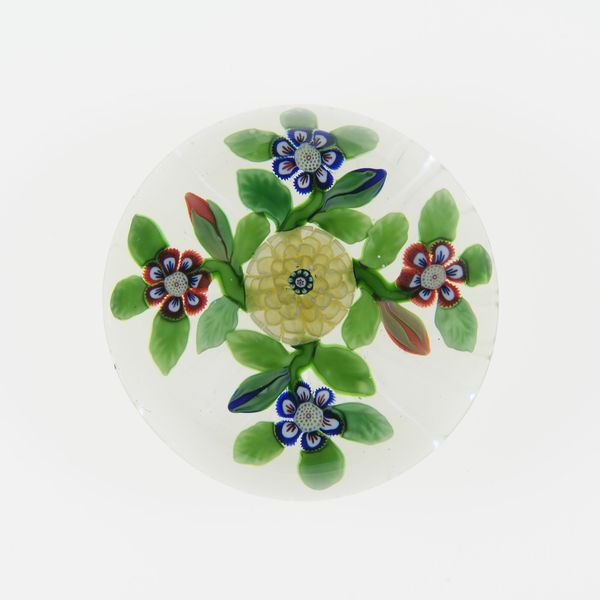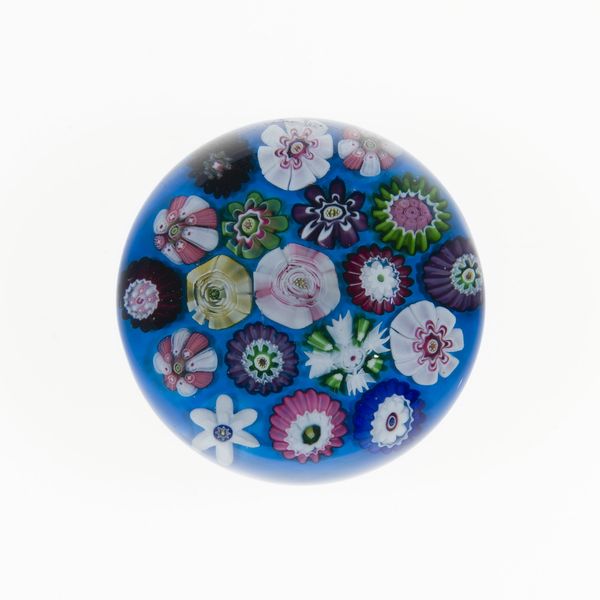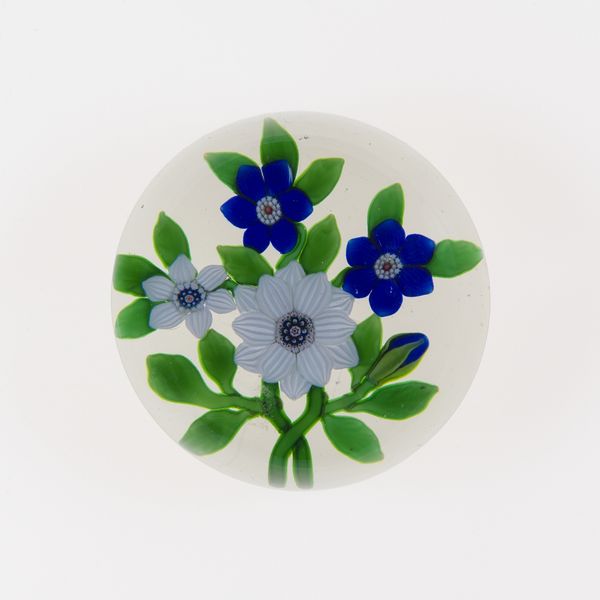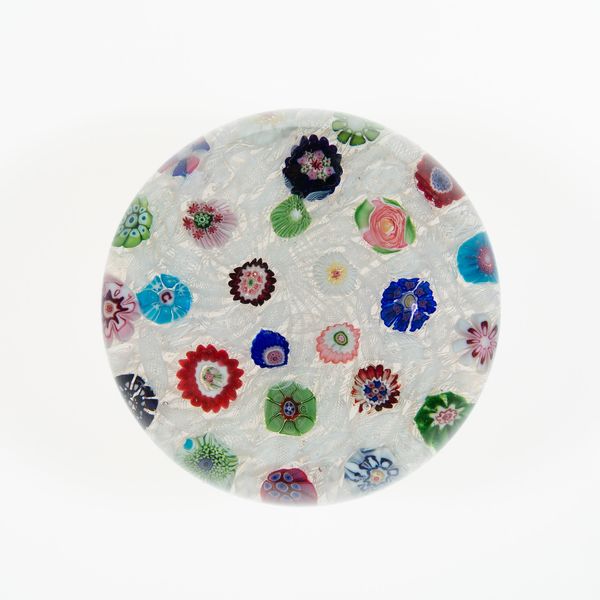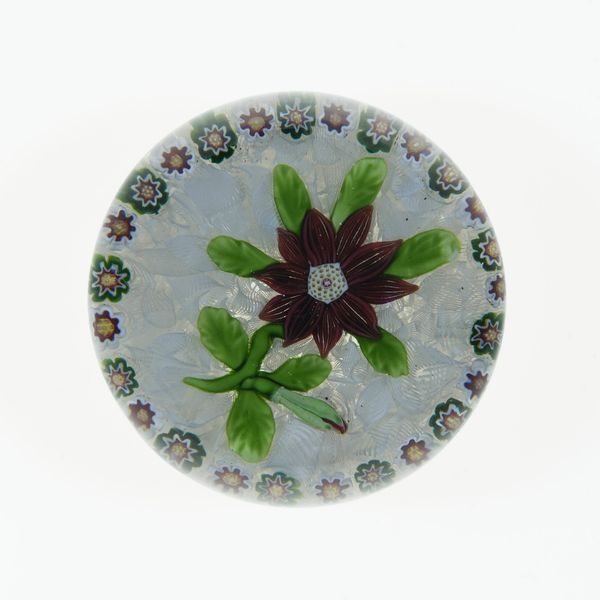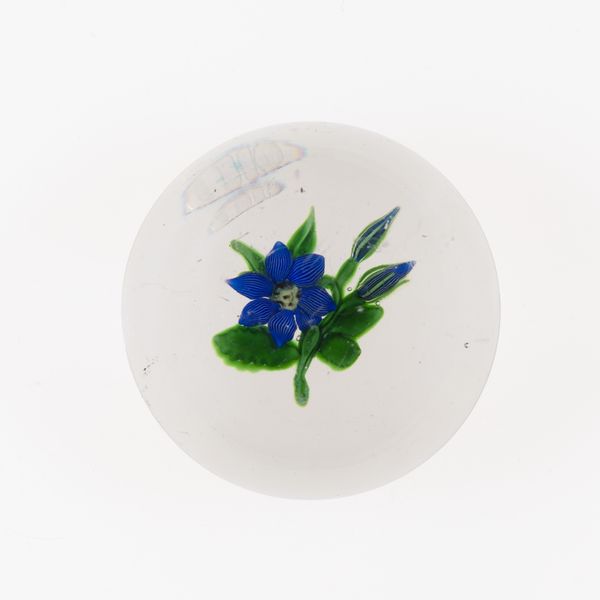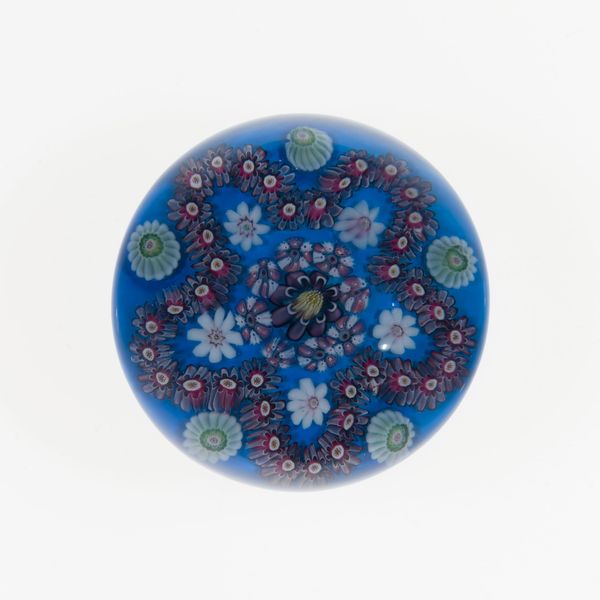
Dimensions: Diam. 6.7 cm (2 5/8 in.)
Copyright: Public Domain
Editor: This is a glass paperweight, attributed to the Compagnie de Saint Louis, dating roughly between 1845 and 1860. I’m struck by how the floral arrangement, though contained, feels so vibrant. What can you tell us about its context? Curator: Considering its place within the broader history of decorative arts, especially glasswork, this paperweight embodies both luxury and control. The encapsulation of these meticulously crafted flowers under glass speaks to the Victorian era's obsession with preservation and the domestication of nature. What sociopolitical forces might have driven the rise in popularity of these ornamental objects during this time? Editor: I guess as industrialization increased, so did an interest in showing some form of control? I wonder, also, who had access to this type of art? Curator: Precisely. These paperweights weren't just functional; they were statements of status and refined taste accessible to the burgeoning middle class. Reflect on how mass production influenced both the creation and distribution, thereby shaping the art market and aesthetic values of that period. Editor: So it wasn’t exactly *accessible* per se. Sort of like… aspirational, then? Almost propaganda? Curator: In a sense, yes. These objects projected an image of stability and prosperity, subtly reinforcing social hierarchies and idealized notions of domesticity through their visual appeal and symbolic associations with nature's controlled beauty. They tell us how art was becoming part of political messaging. Editor: Wow. It's fascinating to realize this simple object embodies so much. I'll definitely be looking at decorative art differently from now on! Curator: And that’s precisely the power of understanding art within its historical context - it reveals the subtle dialogues and power structures that shape our visual world.
Comments
No comments
Be the first to comment and join the conversation on the ultimate creative platform.
